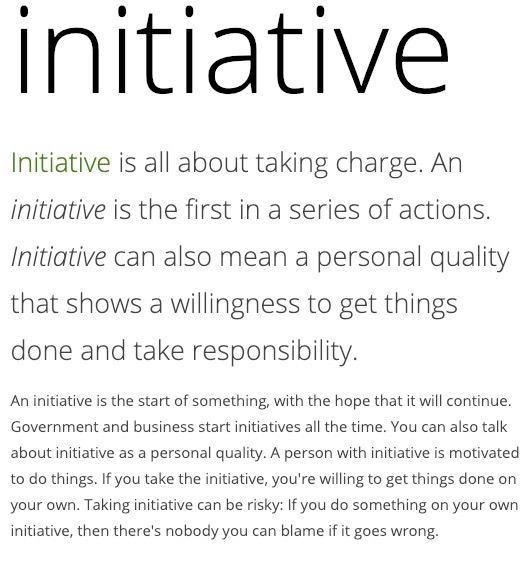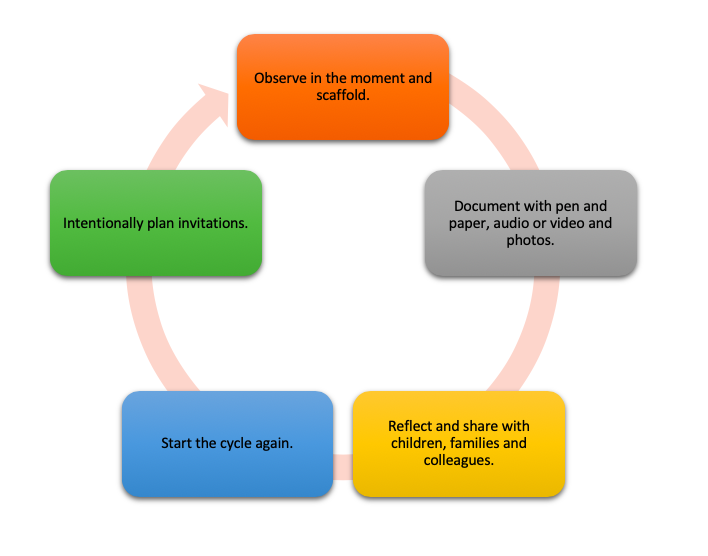By: Diane Kashin, Ed.D, RECE. When I began the journey to learn and understand emergent curriculum, I would not have believed that 20 years later, I would still be reflecting and wondering. Now, I know that I can never arrive at a place where I can say that I know everything that there is to know about emergent curriculum. My learning is still evolving and emerging with reflection and dialogue. Lately, I have been reflecting upon a question that lingers and the answer seems elusive. What is the process of an emerging curriculum? I used to think it only followed the lead of the child, but I have come to understand that it is more complex. It is not child-led. It involves a process of planning that emerges from the daily life of children and adults. It builds on the theories of constructivism, particularly social constructivism. Learning takes place through joint activities and interaction with others. Based on the theories of Lev Vygotsky emergent curriculum involves children and teachers in a process of co-construction. The teacher has a role. The teacher does not stand back and follow the child’s lead. It is child-initiated and teacher-framed. It is a negotiated curriculum (Forman & Fyre, 1998). Let’s take a minute to reflect on what initiative means.

Children will take initiative in their play when their curiosity has been piqued. Invitations to play are provided that will provoke a response. Careful observations in the moment will help determine interests and opportunities to scaffold the experience. Scaffolding is a term that I try not to use lightly. It is one of a number of words in the early learning vernacular that I find is used without understanding. I recently wrote about pedagogy which is another word often used but rarely understood. Many have attributed the origin of the term scaffolding to Vygotsky. However, the term was never used by Vygotsky. It was introduced by Wood, Bruner and Ross (1976) in an attempt to operationalise the concept of teaching in the zone of proximal development (Verenikina, 2008). Vygotsky recognized the active and creative role of individuals. He saw the child as part of a social construct, actively experiencing and internalizing the environment, making meaning of it, and in turn, influencing the environment, just as the social situation influences the child. The term scaffolding (Wood, Bruner, & Ross, 1976) has been used to describe the transition from interpersonal to intrapersonal knowledge. Through scaffolding, learners are able to cross the zone of proximal development. “The distance between the actual developmental level as determined by independent problem solving and the level of potential development as determined through problem solving under adult guidance or in collaboration with more capable peers” (Vygotsky, 1978, p. 86). Scaffolding is significant in the process of playing and learning. It requires that the teacher takes initiative and frames the emerging curriculum. Documenting the process helps make the play and learning visible and offers the teacher opportunities to continue to reflect, think deeply and take further action. How would you scaffold this simple invitation to look through prismatic glasses that I offered my grandson?

The role of the teacher is to reflect, self-evaluate and self-direct to learn more. Initiative is critical to the child’s development as it is to the teacher’s professional development. Vygotsky believed that we all learn in a social construct. In my own never-ending quest to understand documentation and the process of planning I have found reading blogs and articles that I find on social media to be a way to learn from others. It is a self-initiated and self-directed experience. It has led me to this article Big Storm: A Reflection on Children’s Voices in Educator Documentation. The author who is from Australia speaks about getting bogged down “writing long-winded narratives that are time consuming” after the in the moment experience. It is suggested that teachers try “to capture children’s voices during play as they occur naturally and without too much adult intervention”. She speaks about planning intentional experiences and recording children’s responses to thought-provoking questions during the experience. I highly recommend this article and have been reflecting on the questions posed:
- Is it authentic and worthwhile documentation if children’s knowledge and opinions on the learning is not included?
- When we add photos, we capture the image of a child, we capture what they are doing, and perhaps their expression. Is this enough for authentic, genuinely useful and interesting documentation of learning?
It is not always possible to include children’s knowledge and opinions. It depends on the age and capabilities of the children involved. It is possible to interpret children’s responses to invitations and make suggestions as to what they might be thinking in an attempt to consider next steps even when the child is non-verbal. Even the very youngest child can express their voice. When photos are added there is another layer of documentation to interpret. Photos alone are not enough. Photos with interpretation of learning that includes the voices of the children should provide the teacher with enough data to reflect. The key is to be reflective and to interpret. Take initiative to go beyond making statements that the child enjoyed or had fun during the experience and consider what the child was thinking and what interested the child during the experience being recorded. What was the child curious about? Recently, a reader of this blog commented on a previous post on the topic of moving from themes to an emergent curriculum. She asked the question, “where do I start”? Over the years, as I taught emergent curriculum to early childhood education students at both the diploma and the degree level and supported early childhood educators working in the sector, this question comes up time and time again. Where do I start in helping others to learn about where to start? I am not convinced I have the answer, but I thought I would give it a go and ask you the reader to help. We learn in a social construct, lets socially construct the answer to “where do I start”?
- Intentionally plan invitations based on observations & knowledge of child development and the children in your context. Offer experiences in a way that will pique children’s curiosity and motivation to respond.
- Observe in the moment. Scaffold the learning in the moment. Decide when to ask thought-provoking questions and/or provide materials to help the child to think more deeply.
- Document with pen and paper, audio or video and photos.
- Reflect on the experience and the documentation. Share your interpretations by dialoguing with others including children, families and colleagues. Share your documentation in progress, as you try to make it pedagogical.
- Start the cycle again.

In the spirit of collaboration, I turn once again to my friend and colleague, Cindy Green not only for her exceptional editing skills but to offer her input on the question of where to begin. In her words:
I (Cindy), am still thinking about the question, “where do I start”? I hear the voice of Carol Anne Wien, (retired) from the Faculty of Education at York University who suggested to “go gently on yourself”. Going deeper into one’s journey of understanding pedagogical practice takes time, a lot of time. The process that Diane has shared above is a solid one. I would also add that it is important to realize that there is a lot to be said by just giving it a go! Don’t worry about doing everything “right”. Stay open to input from others and curtail defensiveness. Do your research about how learning happens. Think about what you are reading. What does it mean to you? Take initiative even when you may feel hesitant or overwhelmed. My interpretation of “go gently on yourself”, is to take action, not to avoid ongoing learning.
Again, I thank Cindy for being my critical friend. Who else would like to “give it a go”?! Please share your advice to those wondering about where to begin who have not yet started. Please share your recommendations to those who have started but are still wondering about the process of planning and documentation. Thank you in advance!
Thank you for your understanding. While reading your comments I felt myself wanting to race through your reflections…as I have come to learn during my 20 years as a preschool teacher, parent and now grandparent and documenting the learning of children that teaching and learning happen in a social construct….with others. I have come to know that without the child’s voice and the very intuitive dis ernment of photos of that learning..basically we are guessing about what learning is happening.
Where to start? With your relationship with the child! Knowing and loving your children unconditionally will open up a world of wonder.
LikeLiked by 1 person
Which means…knowing and loving yourself FIRST as a teacher..and believing in the positive difference you can make in the life of a child. Love yourself first then loving the child will be very natural.
Try not to misrepresent a very unique experience for the child and aim to be authentic for both child and parent.
LikeLiked by 1 person
“Offer experiences in a way that will pique children’s curiosity and motivation to respond.” Something that will catch their attention and given a place of prominence in the space.
For me this is key, and can be challenging if we think too much. Exploration and experimeentation apply as much to us as to pur children, and the great thing is that we cant get it wrong, we just simply get better at it! Next is to listen and watch with all of our attention, This is super important, and i find listening without immediately questioning, although difficult, is also key. document what we see and hear, and reflect asap, with a colleague. Clues may be few at first, so more gathering of documentation, and a little tweeking may be needed. Calmness, patience, listening, and discussing.
LikeLike
Reblogged this on Essence of Child Caring.
LikeLike
I think being reflective educator in doing documentation is really crucial in every observations to scaffold the learning. Using different methods, strategies and approach will be beneficial for the children to achieved the learning outcomes and goals we plan for them.
LikeLike
Pingback: Child-initiated Learning - Decoda Literacy Solutions